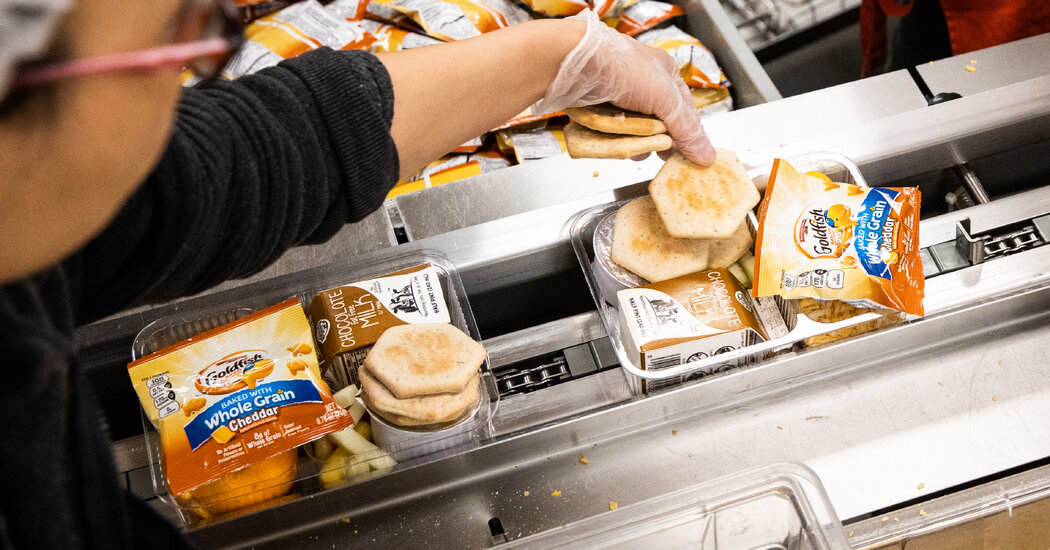
Gov. Gavin Newsom of California on Wednesday signed into law a set of rules aimed at reducing ultraprocessed foods in schools. The legislation comes as many health experts and consumers are becoming increasingly concerned about ultraprocessed foods, which make up 62 percent of the calories U.S. children consume.
Health Secretary Robert F. Kennedy Jr. has said that schools have become too reliant on ultraprocessed foods, calling them “poison.” The foods have been linked to a range of health risks including obesity, Type 2 diabetes and cardiovascular disease. But regulating them is challenging, in part because doing so requires a precise definition, which experts haven’t settled on.
The lack of a legal definition is a major issue in nutrition right now, said Lindsey Smith Taillie, a nutritional epidemiologist at the UNC Gillings School of Global Public Health.
The California law has tackled that problem by including what experts say is the first science-based legal definition of ultraprocessed foods in the United States — a template that other states or even federal lawmakers could follow. Starting July 2035, certain foods that are deemed ultraprocessed by this new definition will be banned from most K-12 schools in California.
The law may also have ripple effects in other states, since products reformulated to meet California’s standards could end up in more school cafeterias across the country.
Banning the ‘Worst of the Worst’
The Real Food, Healthy Kids Act, as the new legislation is called, defines ultraprocessed foods as products that contain one or more of certain additives — such as synthetic food dyes, flavoring agents, emulsifiers, thickeners and stabilizers — as well as high amounts of saturated fats, sodium or added sugars, or any amount of sugar substitutes like artificial sweeteners or sugar alcohols.
Thank you for your patience while we verify access. If you are in Reader mode please exit and log into your Times account, or subscribe for all of The Times.
Thank you for your patience while we verify access.
Already a subscriber? Log in.
Want all of The Times? Subscribe.